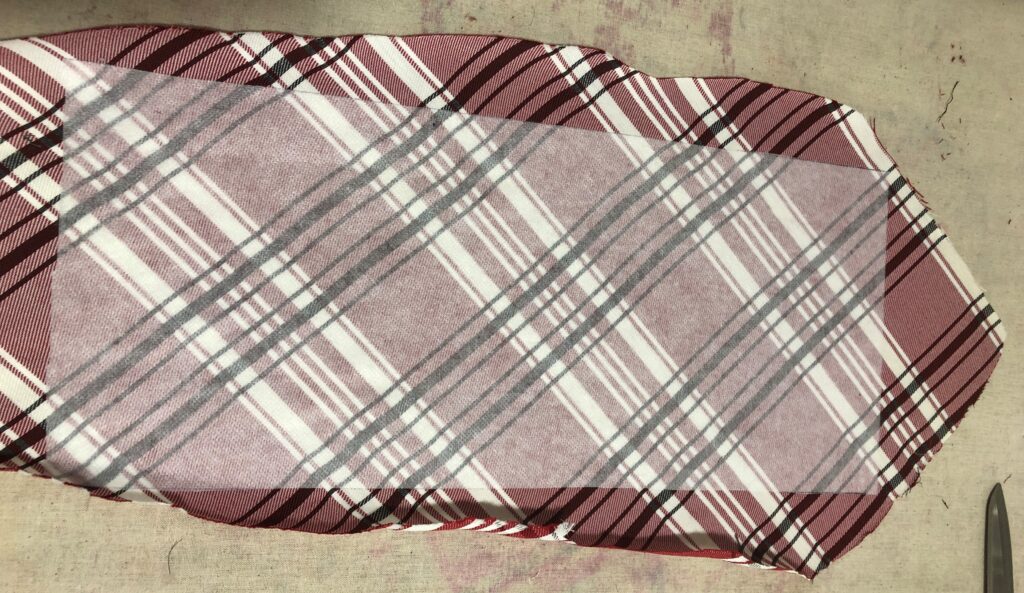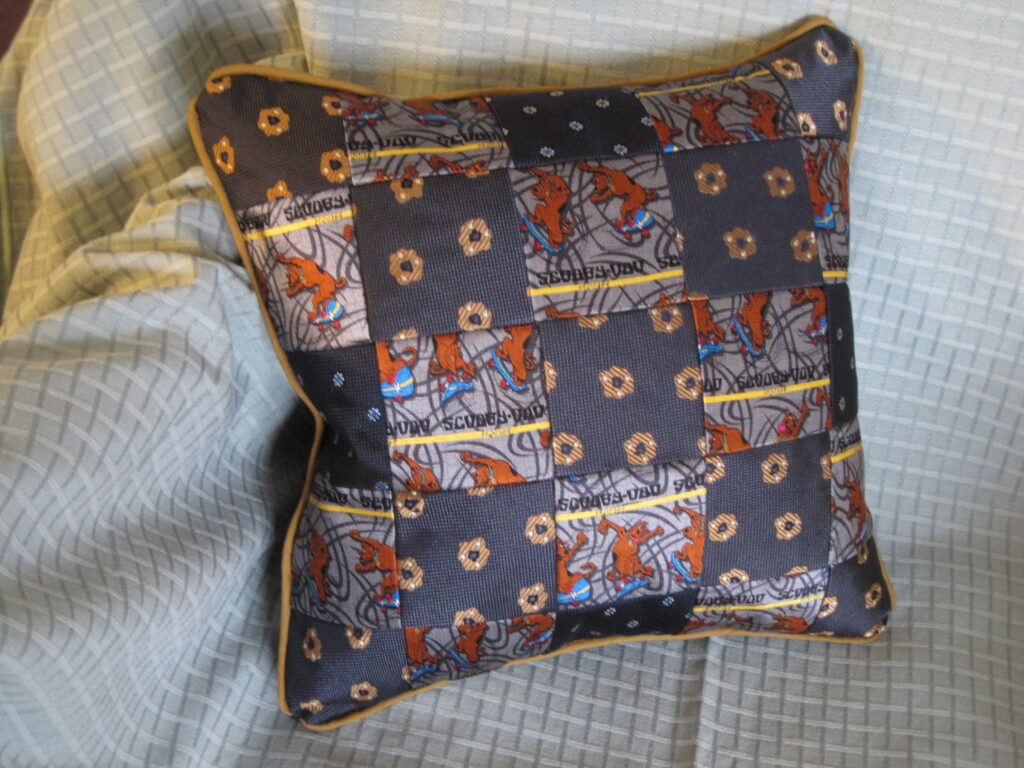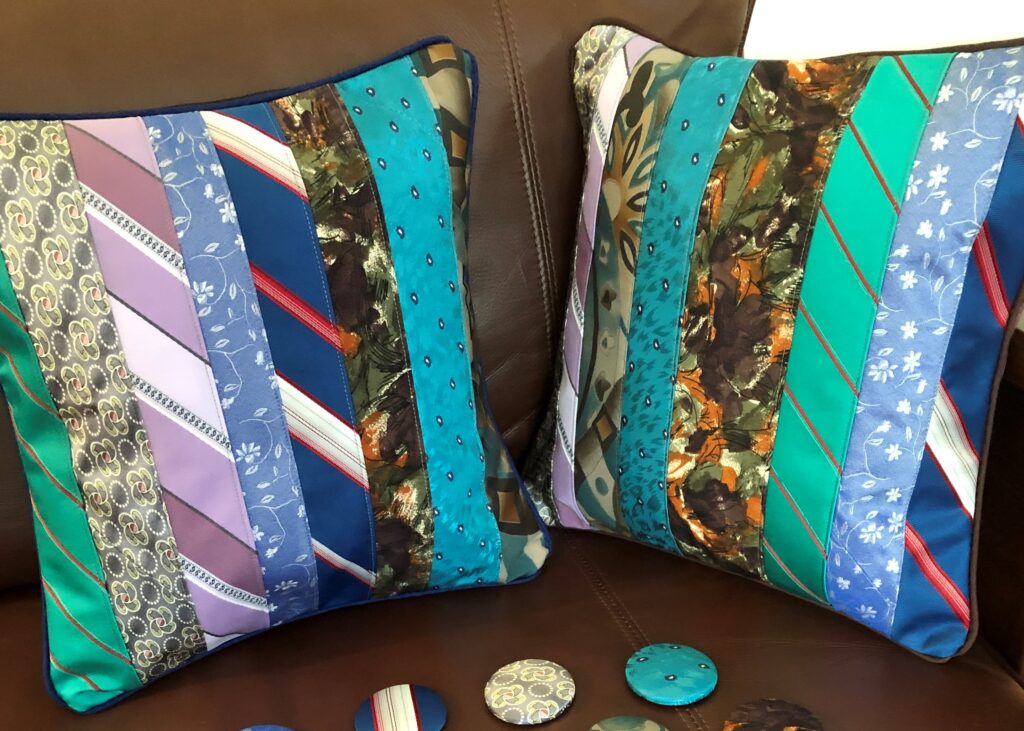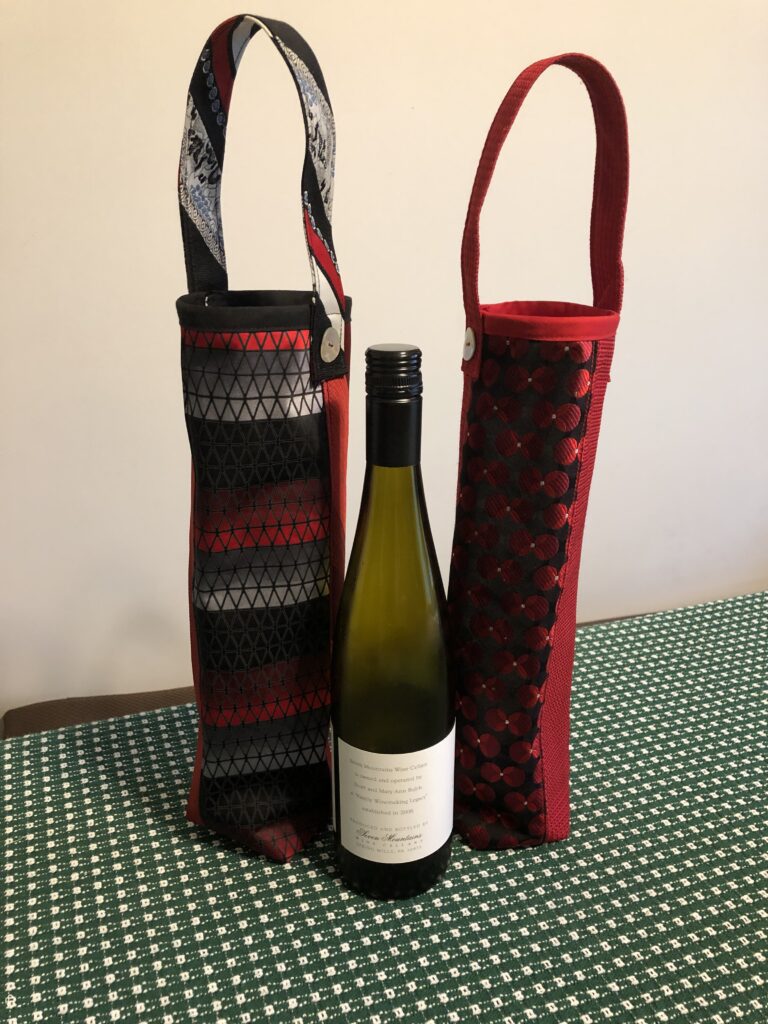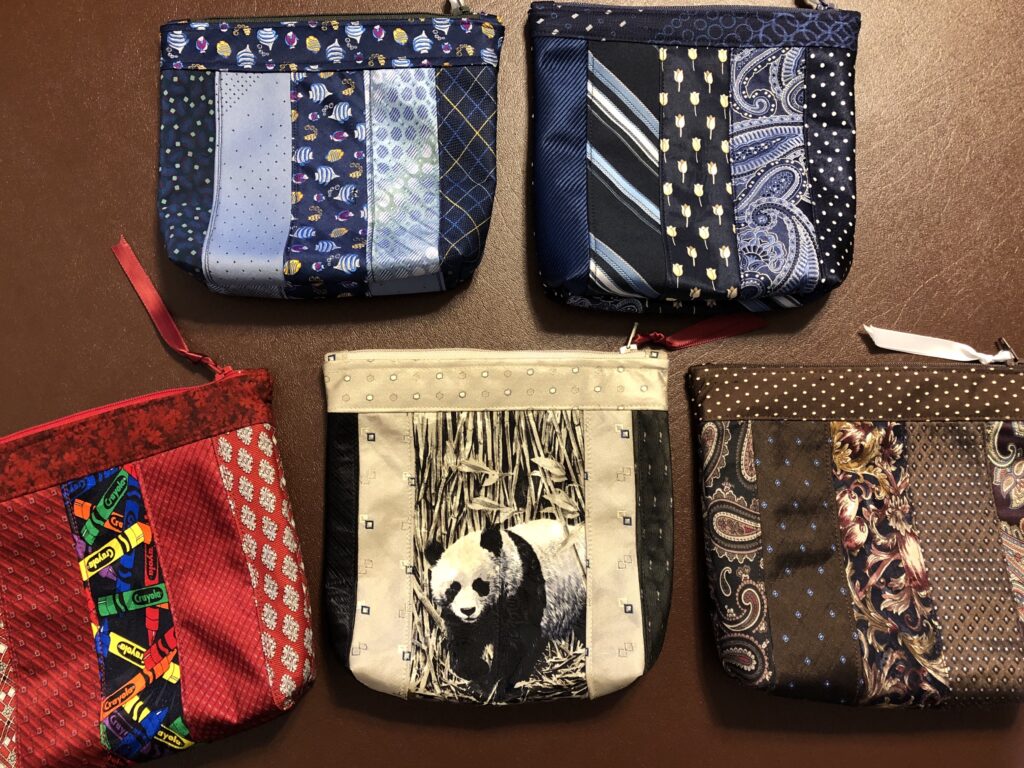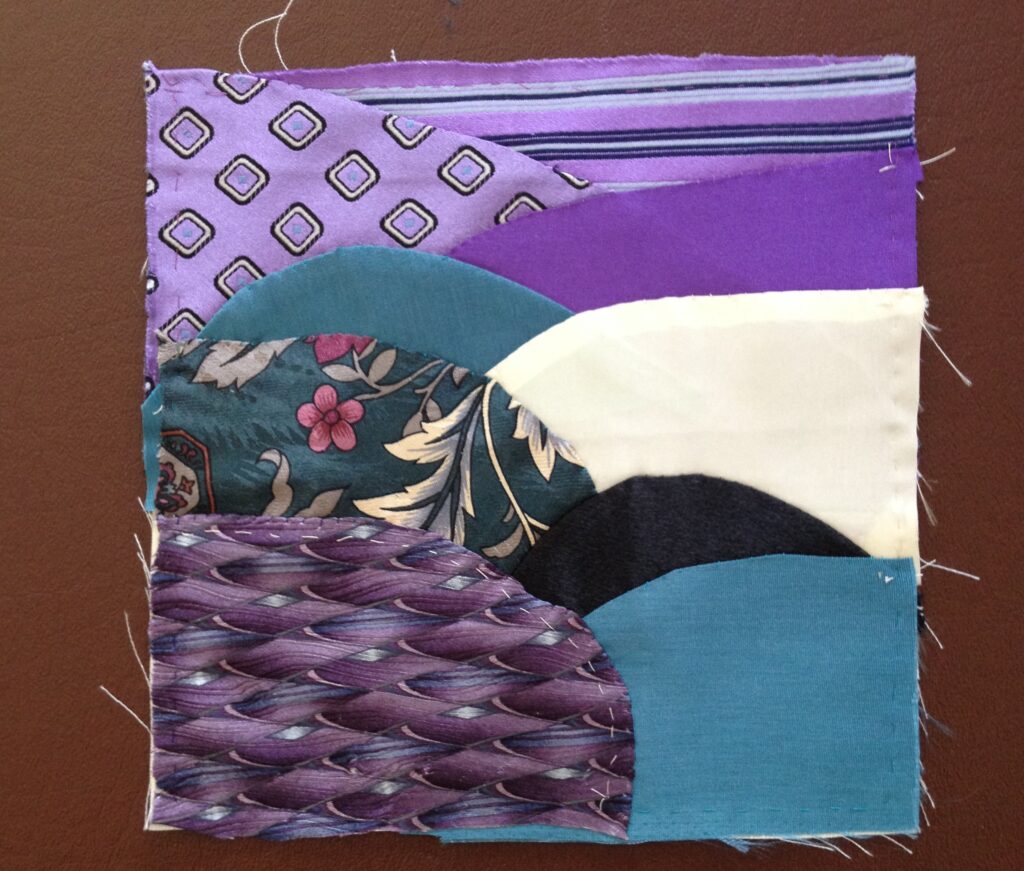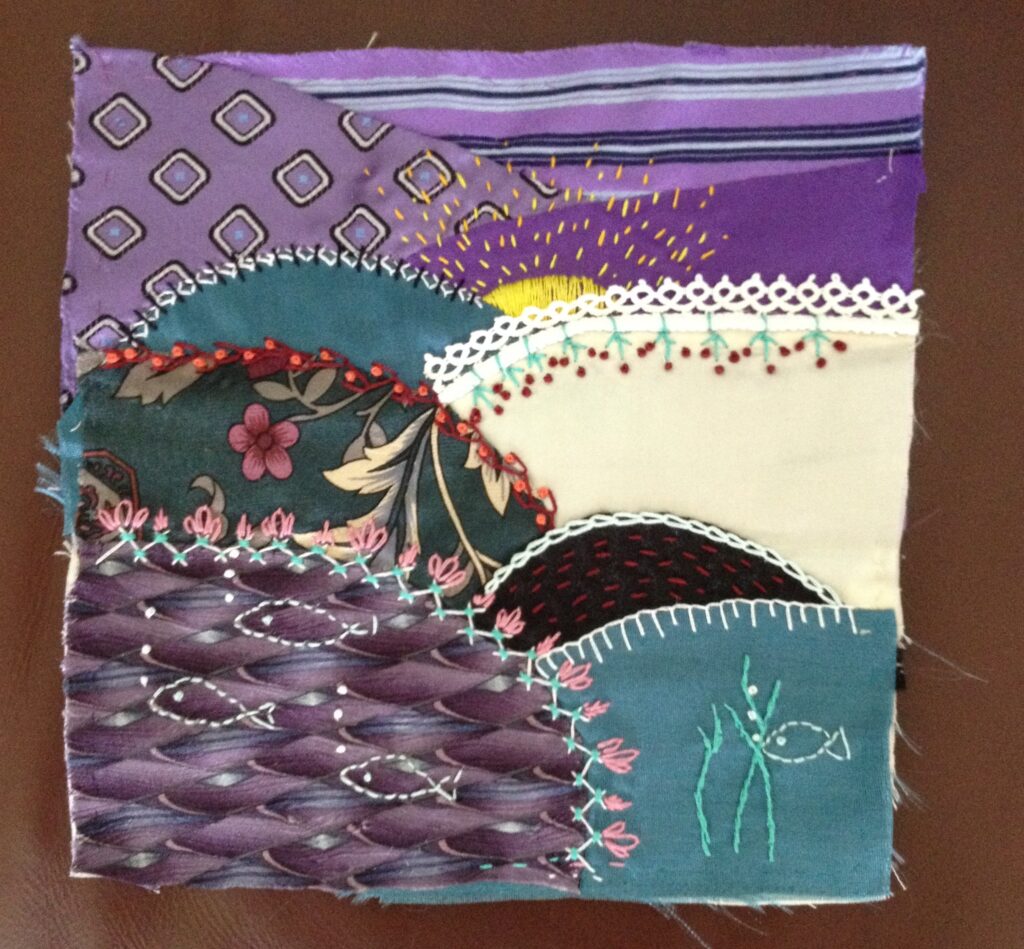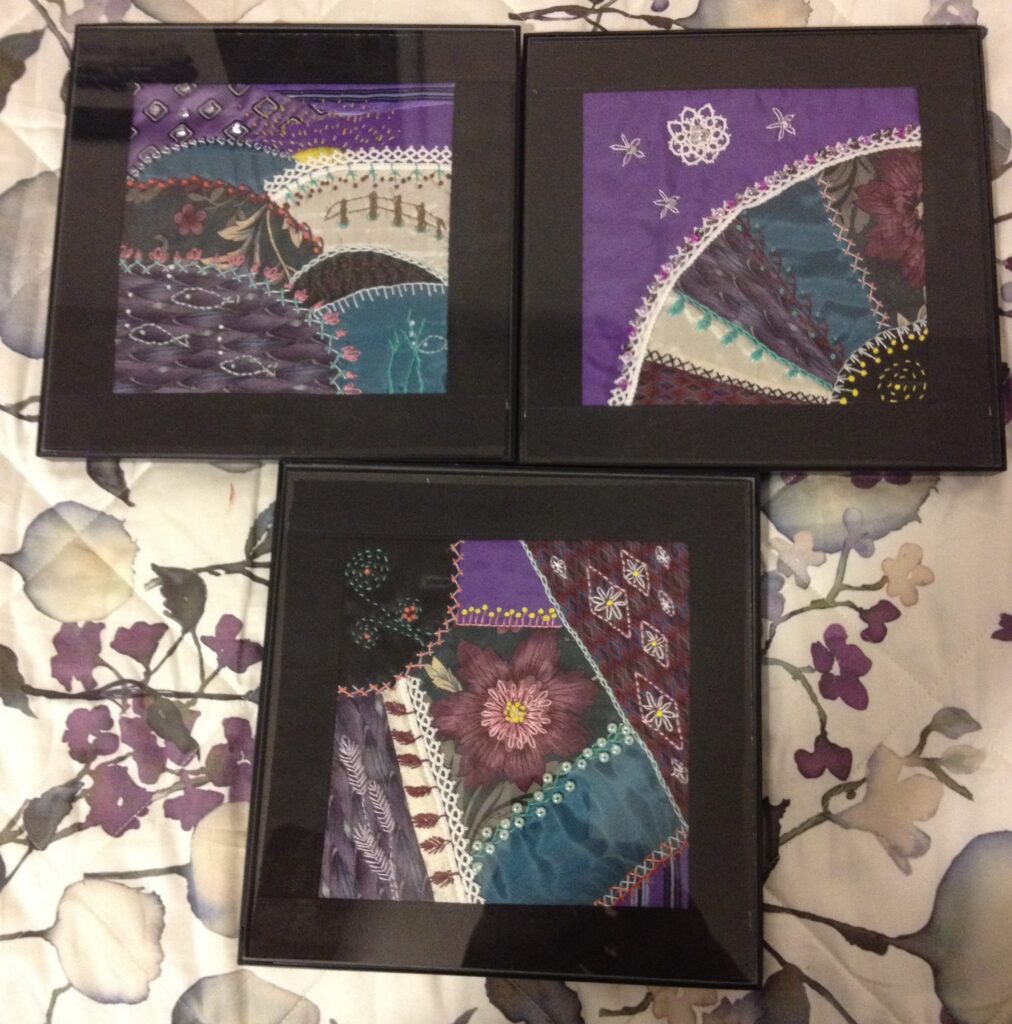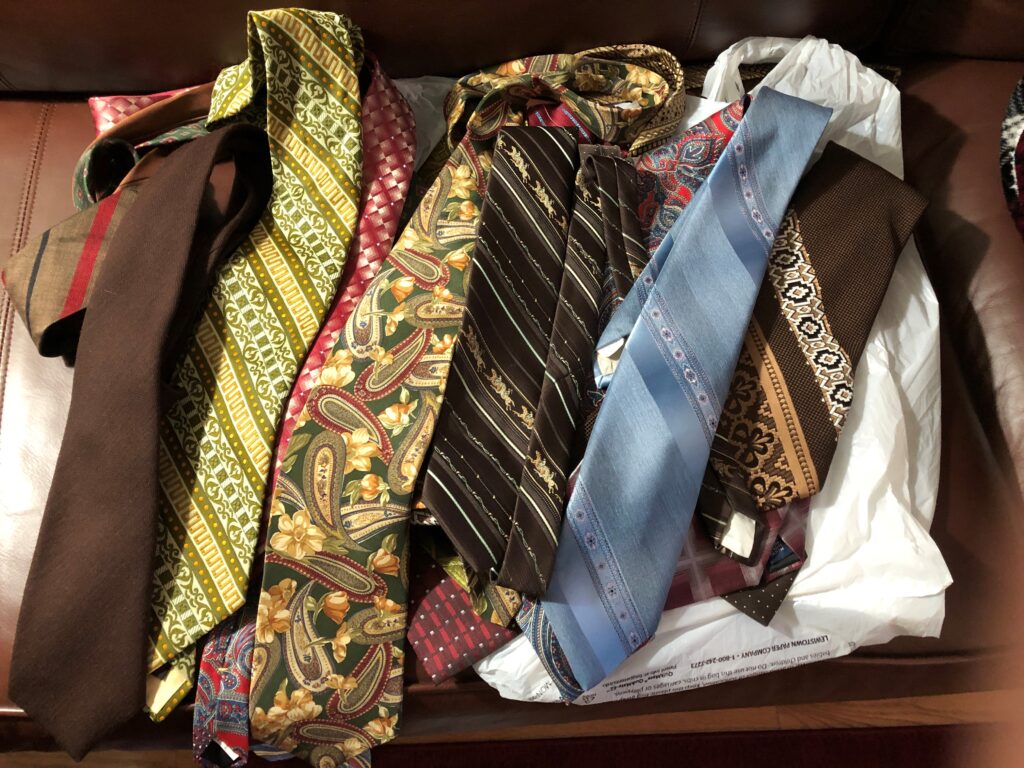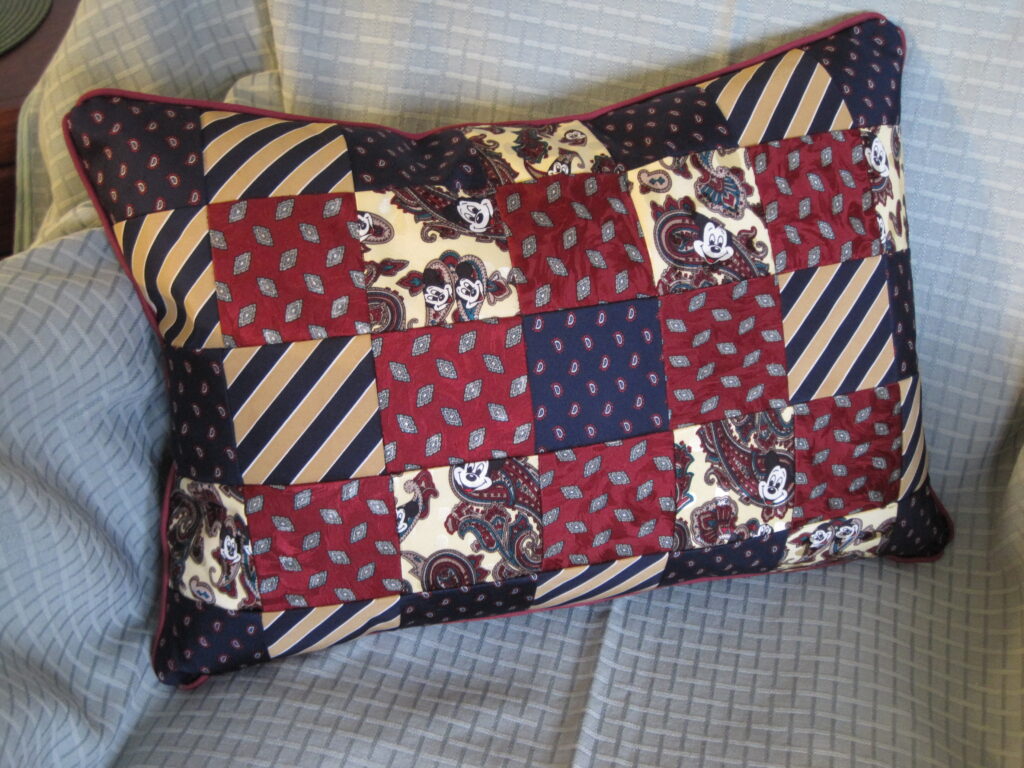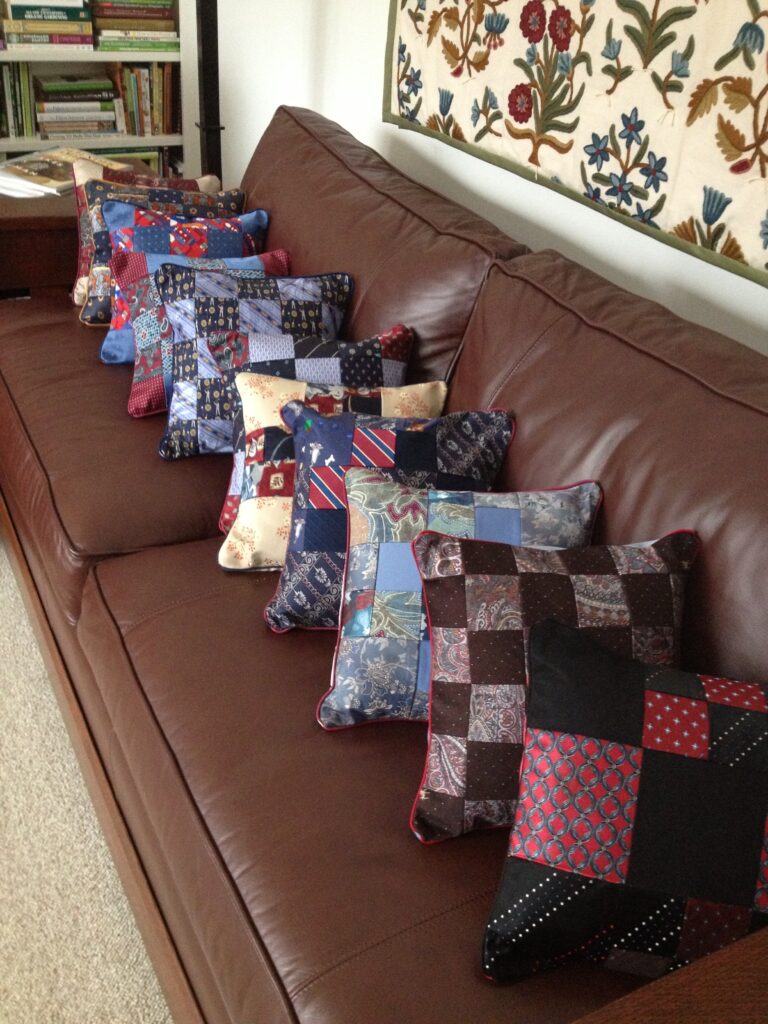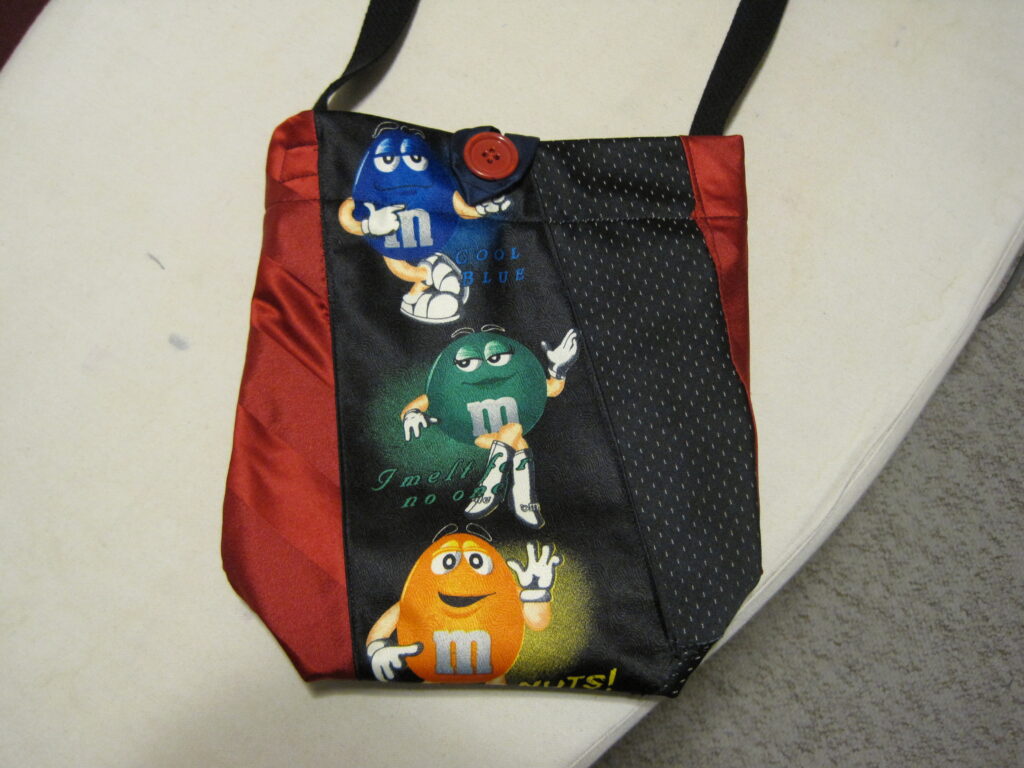I thought it would be so easy…just drag that bin of necktie material out of the corner, check that I hadn’t stuffed any other kind of materials or tools in the bin, have Bert put the bin in the car and drop it off at Scraps & Skeins! Haha!!
After I had explored Scraps & Skeins Shop here in State College (see https://marykisner.com/exploring-the-scraps-and-skeins-shop/) and had conversations with folks who work there, I determined that was the perfect place to donate my stash of neckties. I thought I could just load up the bin and be done with it! I didn’t realize how emotionally attached I was to that stash!
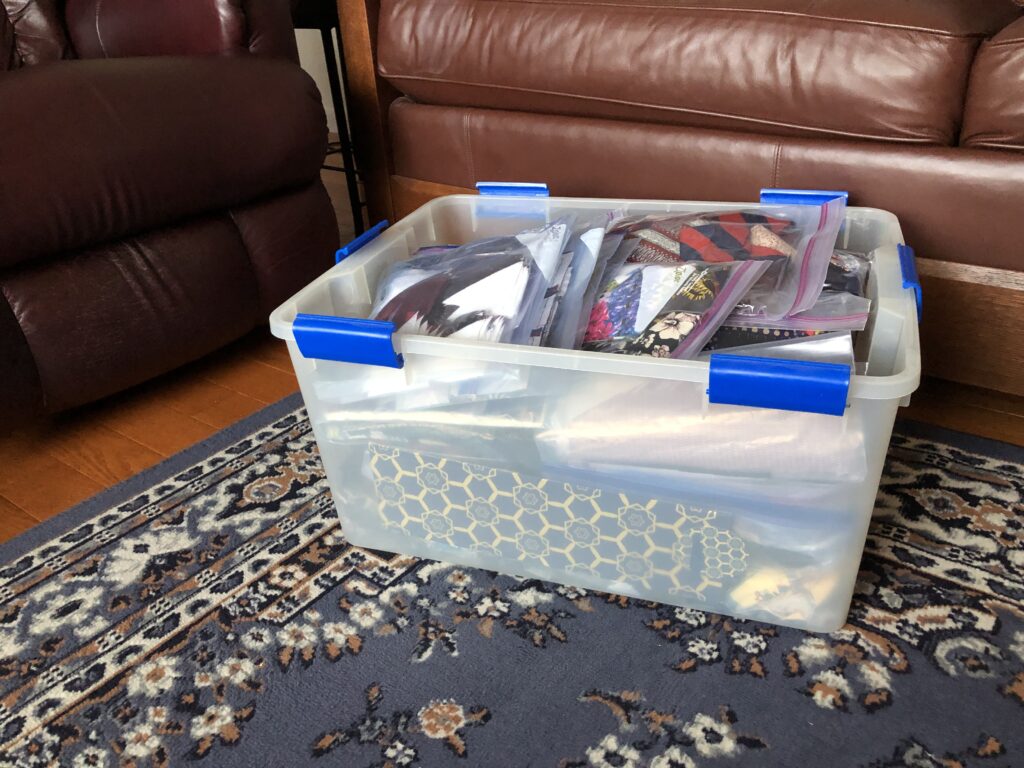
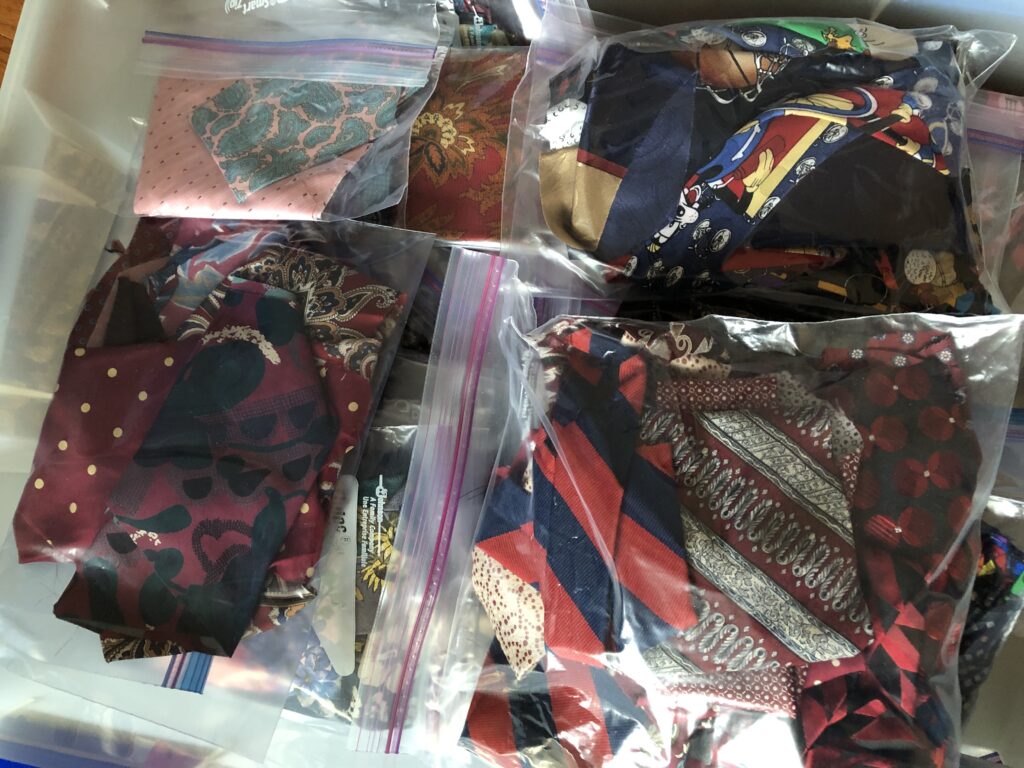
I couldn’t figure out why I was so attached to these ties…did I have other projects in mind? Was each scrap of material so beautiful that I couldn’t let go? Did each necktie have a memory attached?
What got me started with neckties?
Over 10 years ago, I was volunteering for a local Home Health and Hospice organization. I offered my services to make memory bears from a loved one’s clothing after they passed. I must have made over 100 bears during that time. You can read about the memory bears here: https://marykisner.com/making-a-memory-bear/
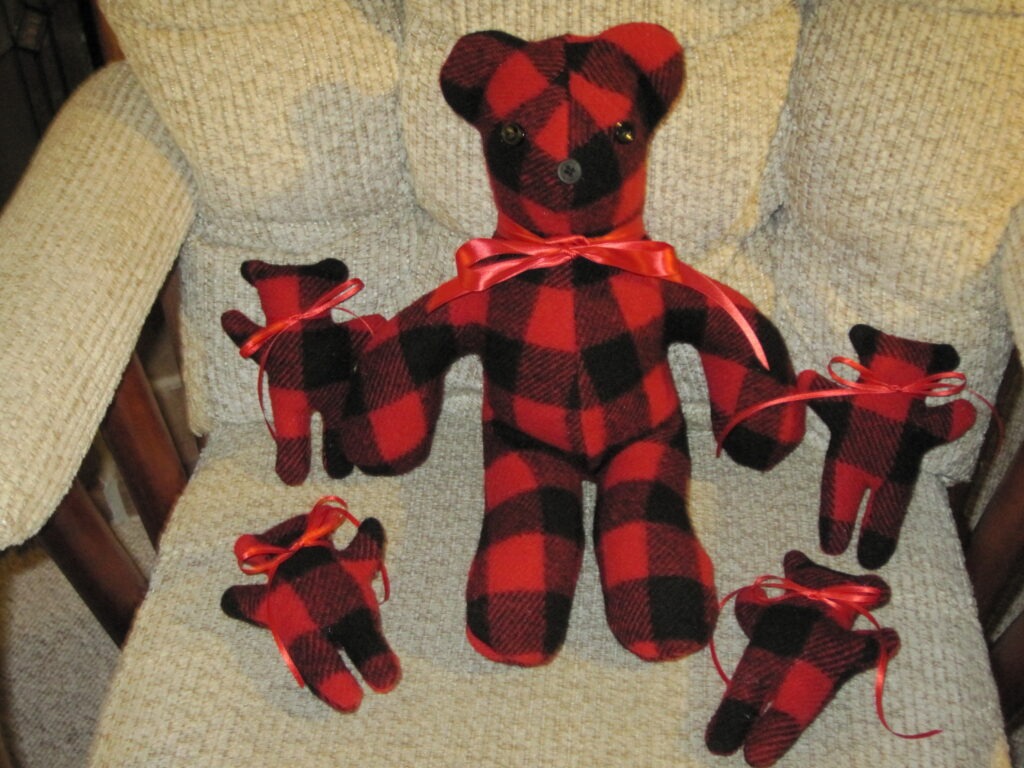
One family asked if I could make something out of a collection of neckties…and my quest to find an appropriate item began.
Some neckties can be very colorful and unique. However, there isn’t a lot of fabric in a tie. It is often not washable or colorfast. While some items are made with whole ties sewn together side to side, like a skirt or throw, they end up quite heavy. I did not get enough ties in that first batch to make anything large.
The inner lining of neckties tends to retain odors from the wearer or cleaning solutions. This is often a layer of wool felt or polyester fabric. I found it was just easier to take them apart and remove the inner lining that retained odors. This gave me tie-shaped fabric pieces about twice the width of the tie, tapering to much smaller at the other end.
Ties are cut on the bias (diagonally across the fabric) which makes them too stretchy to work with and is made in three pieces, so two seams are about in the middle of tie. Adding an iron-on interfacing was essential to use the fabric in other projects. To make something, I was limited to small pieces or strips of varying weights and colors.
I knew I could not make a bear out of bits and pieces of fabric. A little research on Pinterest for memory items showed many folks had made pillows out of neckties, along with other small items composed of strips, squares, or freehand shapes. The photo below shows a pillow made from 8 neckties. The back of the pillow was a piece of polyester satin. This made a nice memory pillow for the widow.
I even made small covered button magnets as an extra gift for the family. You can read about covered button magnets here: https://marykisner.com/more-than-just-a-refrigerator-magnet/.
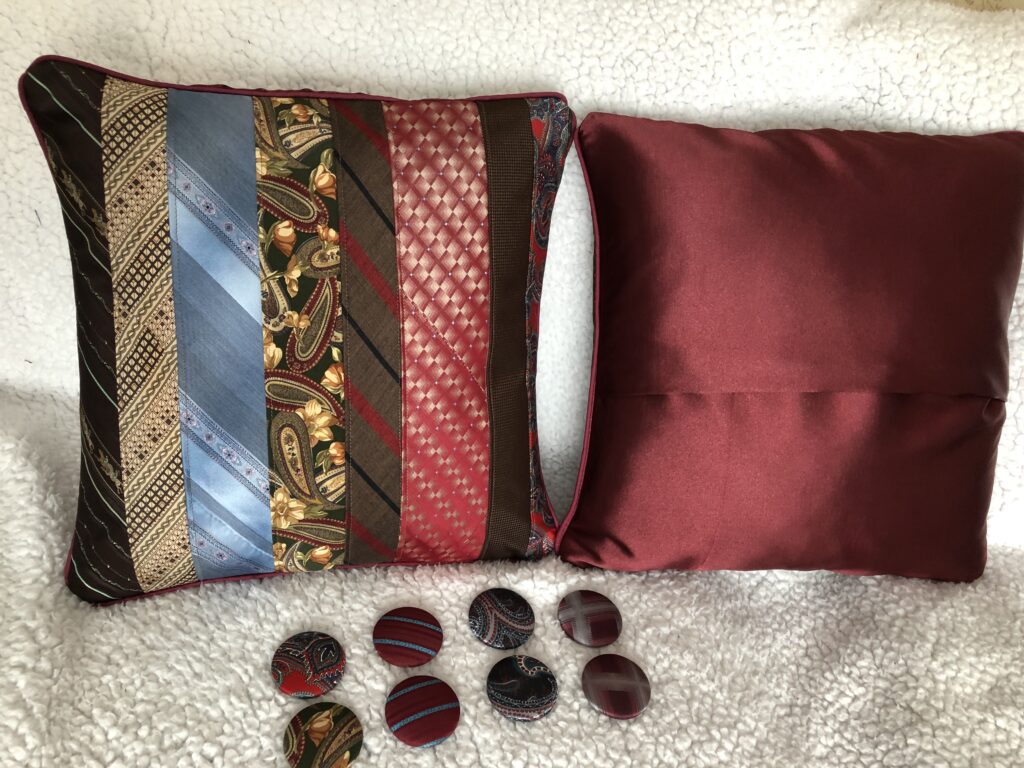
Where did I get neckties to recycle?
I have obtained neckties from friends and acquaintances who have cleaned out attics and closets. Sometimes garage sales have a few for sale. Thrift shops, like St. Vincent DePaul’s and Goodwill usually have a collection. I have paid as little as $1 to as much as $4 per tie. That can be very expensive if I’m not careful! Sometimes specific name brands are worth much more.
The most interesting ties I worked with came from a retired school Principal…he had novelty ties with cartoon characters appropriate for kids. He probably had enough ties to wear a different one each day.
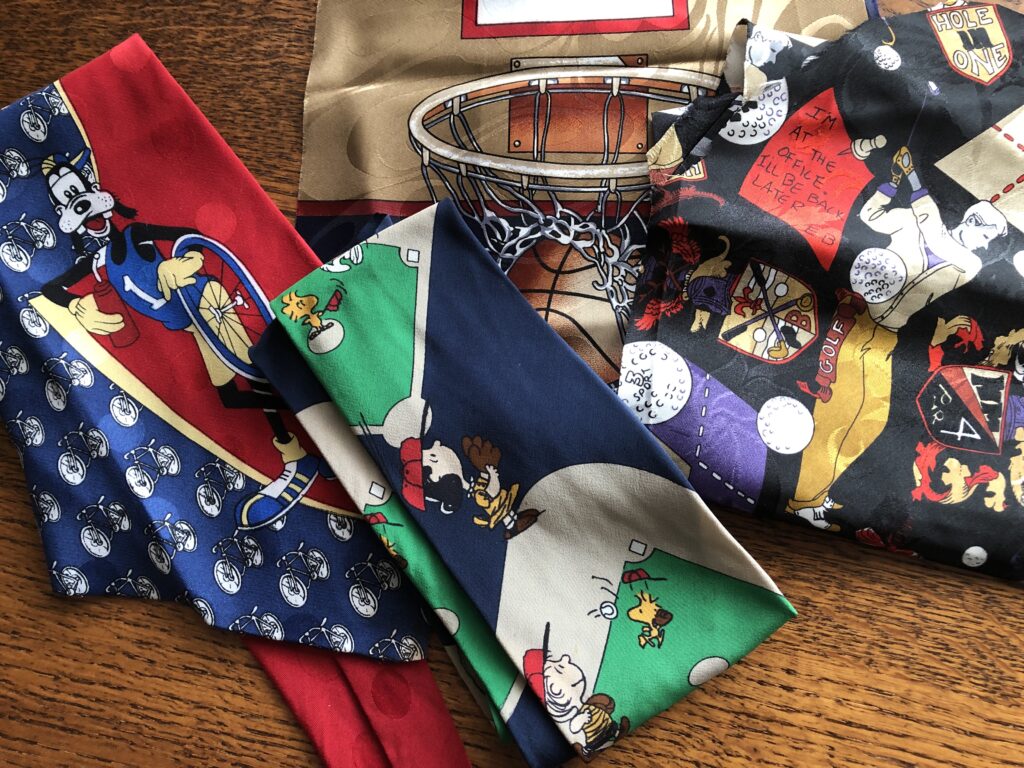
Once I figured out the process to convert a necktie into small but useful pieces of fabric, I was challenged to find other ways to use neckties. First, of course, I cranked out a bunch of pillows just for fun! This pile below I mailed to a niece in California who works as an Activities Director at a gated community. She used them as prizes and gifts in her activities. Obviously, I was focused on make squares from the neckties at the beginning!

I made cosmetic bags for friends showcasing an interesting tie:
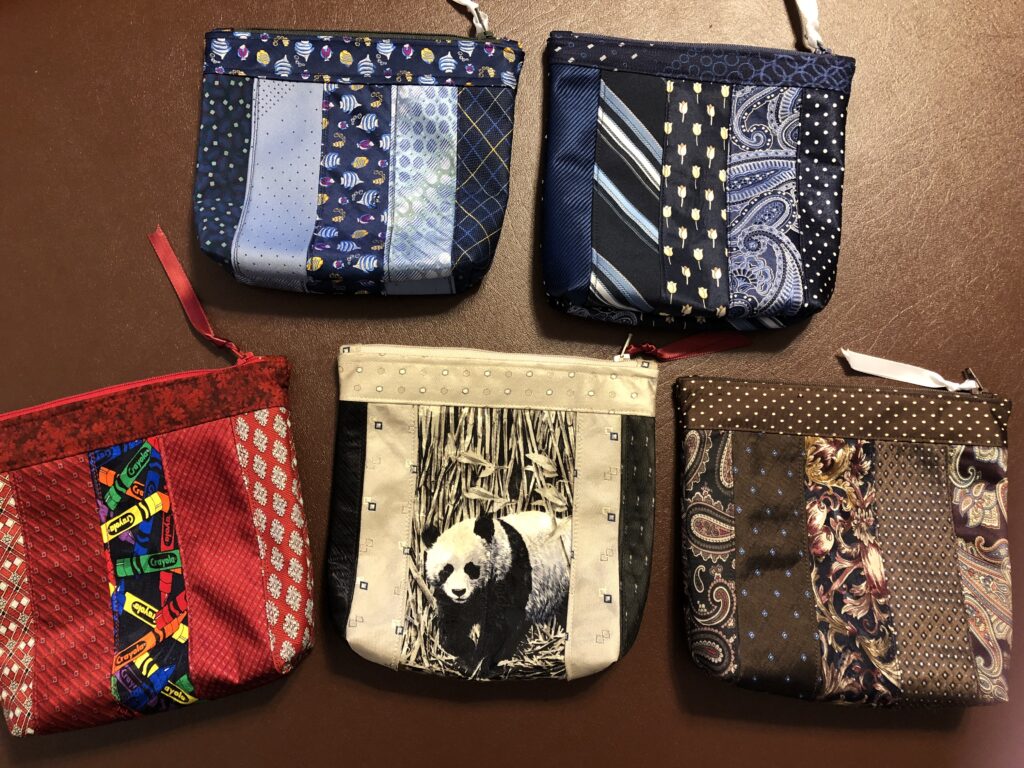
I tried to make wine bags:
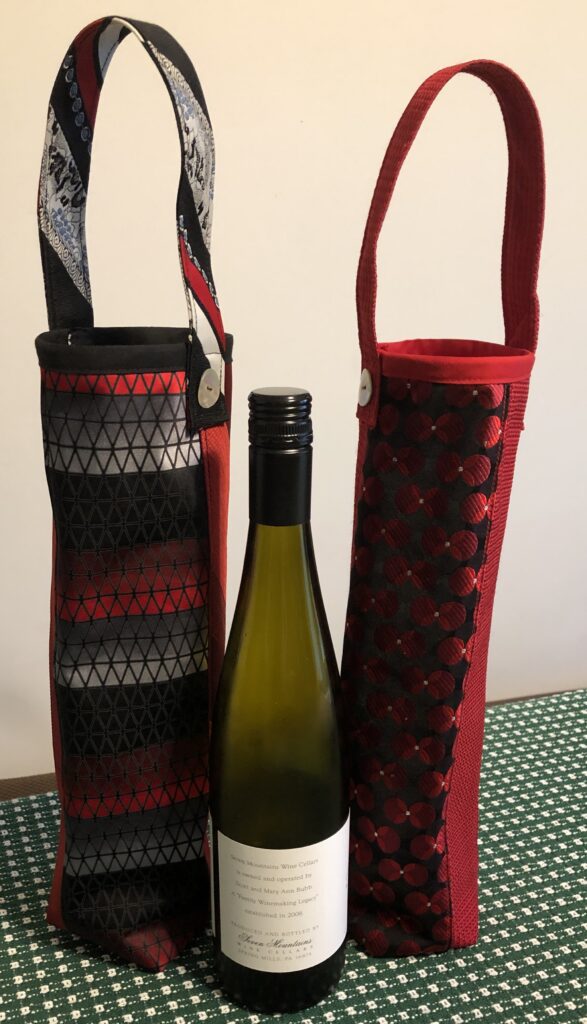
I even made a Christmas stocking for the front door last year!
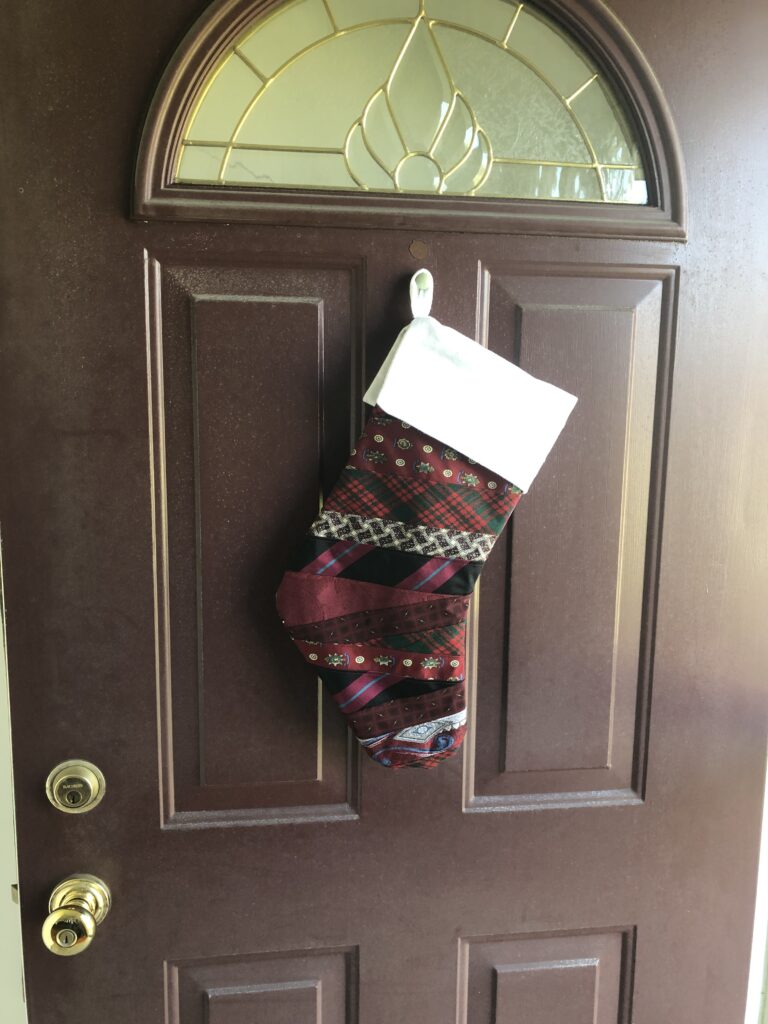
I made crazy quilt pictures…interesting, but I gave them away.
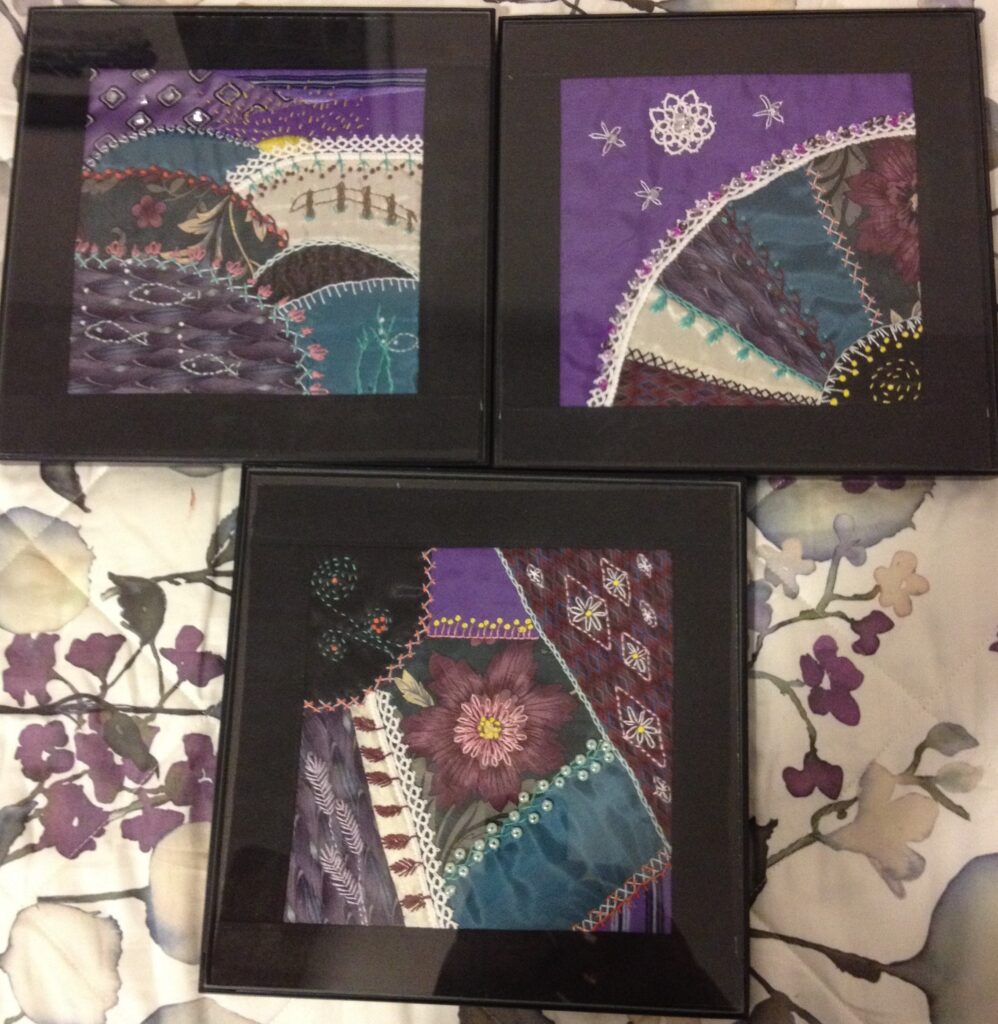
Even though I had made numerous items for fun…all of these projects were missing the deep memories of the pillows I made for a loved one’s family.
Reflecting on why I had this huge stash of necktie pieces was important in the process of letting go. I also realized I will never forget how to work with neckties. If a family loses a loved one, and has a pile of neckties they remember their loved one wearing, I know exactly what to do. I also realized I didn’t need to have this stash of neckties in my cluttered space.
All of this reflection helped me let go of this stash! Maybe someone else can use the pile and do some wonderful things! Perfect!
So, I had Bert load up the bin in the car and off I will go to Scraps & Skeins. What a relief to let go. Now…what to sort next! If I do this a little at a time it might not be so tough! Enjoy!


